Articles > Geography
Know Denmark Largest Cities? Here are the top 25 to get you started.
1. Copenhagen – 1,396,508
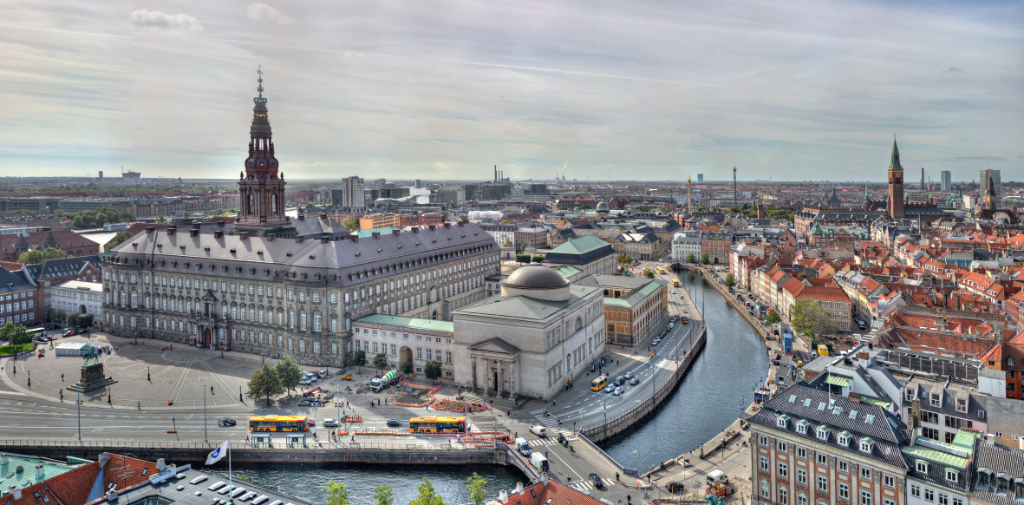
Copenhagen, the capital and largest city of Denmark, is a hub of culture, commerce, and history. Known for its colorful Nyhavn harbor, royal palaces, and innovative architecture, the city has long been a center of Scandinavian trade and politics. Copenhagen blends modern design with centuries of history, from the Tivoli Gardens amusement park to the futuristic Opera House. It is home to world-class restaurants, universities, and museums, as well as thriving neighborhoods that reflect the Danish tradition of hygge, or coziness. Bicycles are central to daily life here, with bike lanes threading across the city. As Denmark’s economic powerhouse, Copenhagen hosts numerous businesses, technology firms, and international institutions, making it one of Europe’s most influential capitals. With its coastal location, the city also emphasizes sustainability, green living, and a connection to the sea, ensuring that it remains vibrant and forward-looking while retaining its cultural heritage.
Interesting Fact:
Copenhagen’s Little Mermaid statue is one of Denmark’s most visited attractions, inspired by Hans Christian Andersen’s fairytale.
2. Aarhus – 301,049
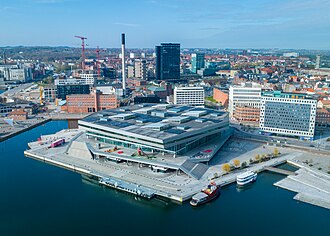
Aarhus, Denmark’s second-largest city, lies on the east coast of Jutland and is often called the country’s cultural capital. It is known for its dynamic arts scene, vibrant university life, and impressive mix of historic and contemporary architecture. Aarhus Cathedral, the longest church in Denmark, stands in the old town, while the ARoS Art Museum and its Rainbow Panorama walkway showcase modern creativity. The city is home to Aarhus University, one of Scandinavia’s top institutions, which brings thousands of international students and fosters innovation in research and business. Aarhus is also surrounded by beautiful nature, including forests and beaches that provide a quick escape from urban life. Festivals, live music, and street food markets highlight the city’s lively spirit, and recent investments in sustainable infrastructure ensure that Aarhus continues to grow responsibly while keeping its historic character intact.
Interesting Fact:
Aarhus was named the European Capital of Culture in 2017, celebrating its diverse artistic and cultural heritage.
3. Odense – 185,480
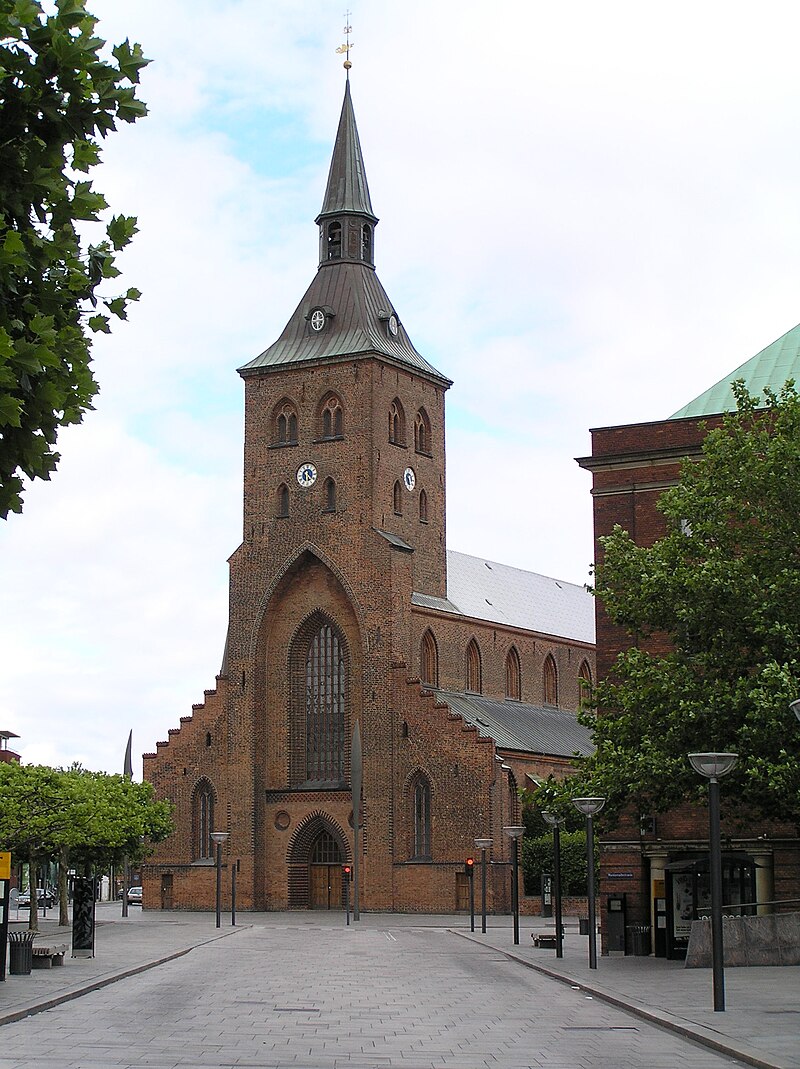
Odense, located on the island of Funen, is Denmark’s third-largest city and the birthplace of Hans Christian Andersen, whose fairytales made him world-famous. The city celebrates its literary heritage with museums, statues, and attractions dedicated to Andersen. Odense also has a strong industrial base, with robotics and healthcare technology driving modern growth. The city has been transforming in recent years with new cultural venues, shopping areas, and improved infrastructure. The Odense Zoo and the historic Funen Village open-air museum are popular attractions for both residents and visitors. Odense is also becoming a hub for sustainable living, with eco-friendly urban planning and public transportation improvements. Its mix of cultural pride, history, and modern innovation makes it one of Denmark’s most charming and forward-thinking cities.
Interesting Fact:
Hans Christian Andersen’s childhood home in Odense is now a museum dedicated to his life and works.
4. Aalborg – 121,878
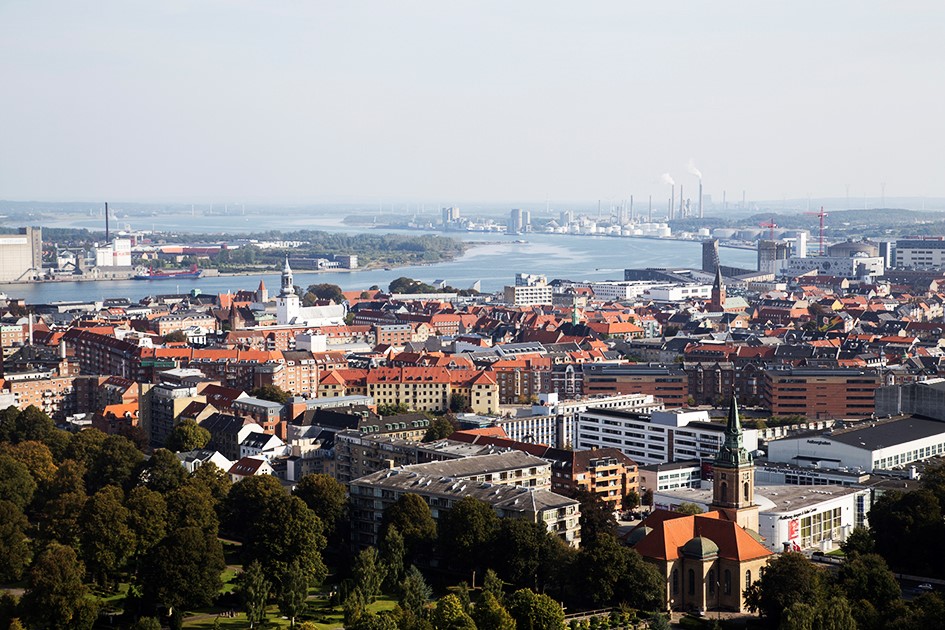
Aalborg, in northern Jutland, is a historic industrial city that has reinvented itself as a hub for culture, education, and technology. Once heavily associated with shipbuilding and industry, Aalborg has transformed into a modern urban center with a thriving cultural life. The city’s waterfront has been redeveloped into a lively promenade filled with cafes, museums, and the striking Aalborg Opera House. Aalborg University contributes significantly to the local economy, focusing on engineering, IT, and energy research. The city is also known for its carnival, one of the largest in northern Europe, drawing thousands of visitors each year. With its historic castle, half-timbered houses, and blend of old and new architecture, Aalborg represents Denmark’s ability to balance heritage with modern progress.
Interesting Fact:
Aalborg hosts Scandinavia’s largest annual carnival, attracting tens of thousands of participants in colorful costumes.
5. Esbjerg – 71,554
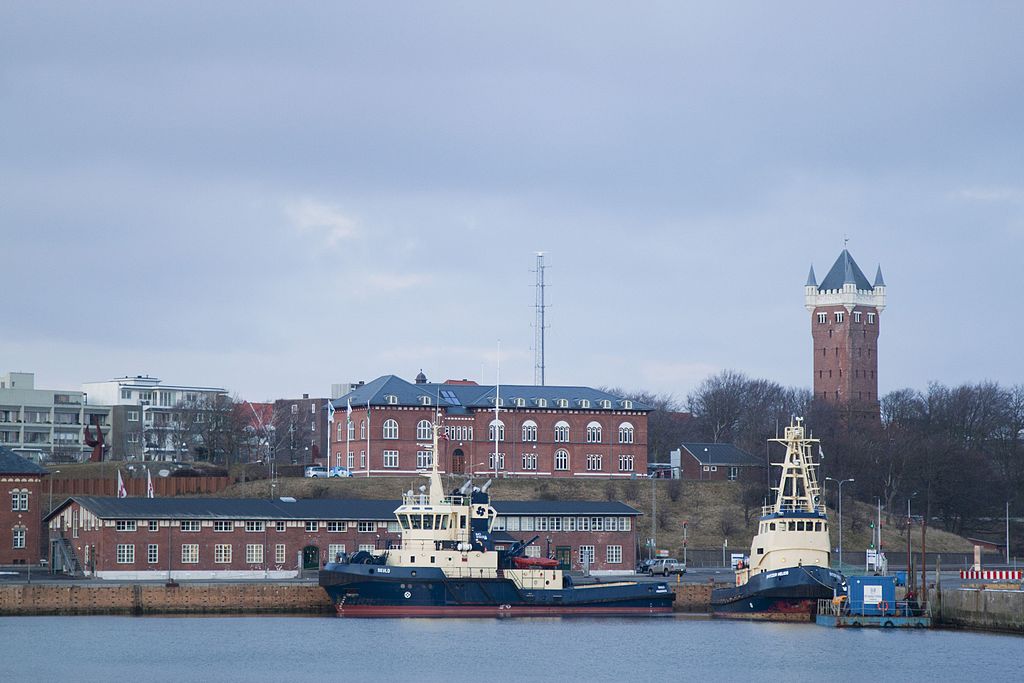
Esbjerg, located on the west coast of Jutland, is Denmark’s fifth-largest city and one of its most important seaports. The city developed rapidly in the late 19th century as a hub for fishing and shipping. Today, Esbjerg is a center for offshore oil and wind energy, playing a vital role in Denmark’s renewable energy industry. Its port remains one of the busiest in the country, serving both commercial and passenger traffic, including ferries to the North Sea islands. Esbjerg is also home to several cultural institutions, such as the Esbjerg Art Museum and the Fisheries and Maritime Museum. The striking “Man Meets the Sea” monument, four giant white statues facing the ocean, has become the city’s iconic landmark. With its maritime roots and modern focus on sustainability, Esbjerg is a city looking firmly toward the future.
Interesting Fact:
The “Man Meets the Sea” sculpture in Esbjerg stands 9 meters tall and symbolizes humanity’s relationship with the sea.
6. Randers – 64,511

Randers, situated in central Jutland, is one of Denmark’s oldest market towns, with roots dating back to the Viking Age. Today it is known for its blend of cultural heritage and modern industry. Randers Regnskov, a tropical zoo housed inside three giant domes, is one of the city’s best-known attractions and draws families and visitors from across the country. The city also has a vibrant arts scene, with museums, galleries, and theaters highlighting both Danish and international works. Historically, Randers prospered as a hub for trade thanks to its location along the Gudenå River, which continues to be a scenic and recreational feature of the area. The town’s cobblestone streets and old buildings contrast with its growing role in manufacturing and services. Randers manages to preserve its history while adapting to the needs of modern Denmark.
Interesting Fact:
Randers Regnskov houses over 250 species of tropical plants and animals in its rainforest domes.
7. Horsens – 64,418
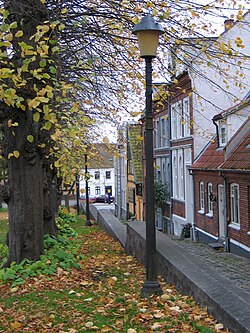
Horsens, located on the east coast of Jutland, is a city that has transformed its identity in recent decades. Once known as an industrial hub with a strong manufacturing base, Horsens has embraced culture and events as drivers of growth. The city is now famous for hosting large international concerts, art exhibitions, and cultural festivals. One of its unique attractions is the former state prison, now converted into a museum and cultural venue that draws thousands of visitors each year. Horsens is also home to educational institutions and has become a lively university city. Its waterfront has seen major redevelopment, turning the harbor area into a modern urban space with housing, restaurants, and leisure facilities. Horsens stands as an example of a city successfully reinventing itself while retaining its traditional strengths in industry and commerce.
Interesting Fact:
The old Horsens Prison is now a museum and event space, hosting concerts inside the former prison yard.
8. Kolding – 63,645
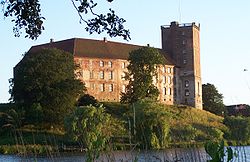
Kolding, in southern Jutland, is both a historic and modern city. It is home to Koldinghus Castle, a medieval fortress that now houses a museum with rotating exhibits, including fine art and cultural treasures. The city has become a center for design and education, with institutions like Design School Kolding helping to shape Denmark’s reputation for innovation and creativity. Kolding also has a thriving business community, especially in logistics and manufacturing, due to its central location. The city’s lakes and green spaces make it a pleasant place to live, and its commitment to sustainability is evident in urban planning and infrastructure. Kolding is also recognized as a hub for conferences and events, drawing international visitors. This blend of history, design, and commerce makes it one of Denmark’s most dynamic mid-sized cities.
Interesting Fact:
Koldinghus Castle, partly in ruins for centuries, was rebuilt and is now one of Denmark’s leading museums.
9. Vejle – 62,011
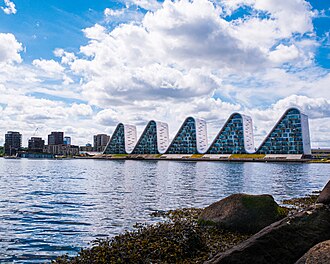
Vejle, located in southeastern Jutland, is known for its picturesque natural surroundings and innovative architecture. The city lies at the end of Vejle Fjord, surrounded by wooded hills and valleys, giving it one of the most scenic settings in Denmark. Vejle has reinvented itself in recent years with modern waterfront developments, including the striking wave-shaped apartment complex Bølgen. The city also has a vibrant cultural life, with theaters, museums, and music venues. Historically, Vejle was an industrial city focused on textiles and milling, but it has transitioned toward services, green energy, and technology. Its location and transportation links make it a growing business hub. Residents enjoy a balance of natural beauty and urban amenities, making Vejle one of Denmark’s most attractive places to live.
Interesting Fact:
Vejle’s “Bølgen” (The Wave) is an award-winning residential building that has become an architectural landmark.
10. Roskilde – 53,354
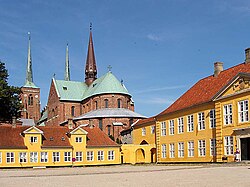
Roskilde, just west of Copenhagen, is one of Denmark’s oldest cities and a center of culture and history. Its most famous landmark is Roskilde Cathedral, a UNESCO World Heritage Site where many Danish kings and queens are buried. The city is also home to the Roskilde Festival, one of Europe’s largest music festivals, drawing international stars and tens of thousands of fans each summer. The Viking Ship Museum, showcasing preserved ships and maritime heritage, highlights Roskilde’s deep historical roots. While the city has ancient origins, it also thrives as a modern educational and commercial hub. Roskilde University contributes to the city’s lively atmosphere, and its proximity to Copenhagen makes it a popular place for commuters. The combination of history, music, and academia ensures Roskilde’s unique position in Danish life.
Interesting Fact:
The Roskilde Festival has been held annually since 1971 and is one of Europe’s largest music events.
11. Silkeborg – 52,571

Silkeborg, in central Jutland, is surrounded by some of Denmark’s most beautiful natural scenery. The city lies along the Gudenå River and is known for its lakes, forests, and rolling hills. These landscapes make Silkeborg a popular destination for outdoor activities such as hiking, boating, and cycling. The city is also culturally vibrant, with art museums, theaters, and music venues. Silkeborg is famous for housing the Tollund Man, a naturally preserved Iron Age body displayed at the Silkeborg Museum. While tourism is important, the city also has a strong industrial and business presence. Silkeborg blends natural beauty with cultural richness, offering both residents and visitors a balanced lifestyle. It has grown into a thriving community that emphasizes sustainability, recreation, and cultural pride, making it a gem in central Denmark.
Interesting Fact:
The Tollund Man, a 2,400-year-old bog body, was discovered near Silkeborg in 1950.
12. Herning – 51,782

Herning, located in central Jutland, is a city closely tied to Denmark’s textile and fashion industries. Once known primarily as a textile hub, Herning has diversified into trade fairs, conferences, and cultural activities. The city hosts the MCH Messecenter, one of Scandinavia’s largest exhibition centers, attracting international events throughout the year. Herning also has a strong cultural life, with the HEART Museum of Contemporary Art and various music and theater venues. Sports are another important aspect of the city, with a passionate following for ice hockey and football. While Herning is relatively young as a major city, it has grown rapidly thanks to its entrepreneurial spirit. Its mix of business, culture, and sports makes it a lively and forward-looking community that punches above its weight in influence.
Interesting Fact:
Herning’s Messecenter is the largest exhibition and conference center in Scandinavia.
13. Hørsholm – 48,349
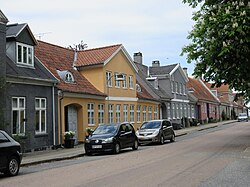
Hørsholm, located north of Copenhagen, is a suburban city known for its high quality of life, green spaces, and historical landmarks. The city combines residential charm with cultural and recreational opportunities. Hørsholm Church and the surrounding parklands highlight the city’s deep history, while the nearby Øresund coast provides scenic beauty. The area is known for its affluent neighborhoods, excellent schools, and strong community life. Though smaller than Denmark’s biggest urban centers, Hørsholm plays an important role in the Copenhagen metropolitan area, serving as a commuter hub as well as a destination for leisure. It is also home to cultural institutions and outdoor attractions, making it a desirable place to live. Its balance of history, modern comfort, and natural landscapes defines Hørsholm’s unique character.
Interesting Fact:
Hørsholm was once home to Hirschholm Palace, demolished in the 19th century but remembered as “the Versailles of the North.”
14. Helsingør – 48,134
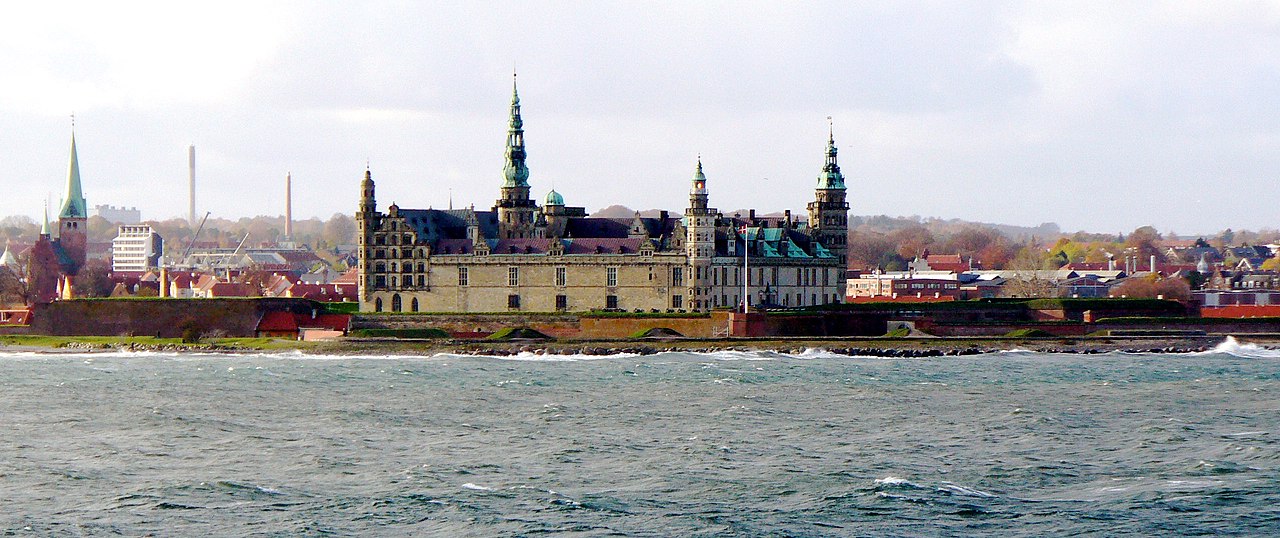
Helsingør, known internationally as Elsinore, is located on the northeastern tip of Zealand. The city is most famous for Kronborg Castle, immortalized as the setting of Shakespeare’s play “Hamlet.” Today the castle is a UNESCO World Heritage Site and one of Denmark’s most visited landmarks. Helsingør has long been a maritime city, controlling one of the narrowest points of the Øresund Strait. Its historic old town features cobbled streets and half-timbered houses that preserve its medieval atmosphere. Beyond history, Helsingør is also a modern commuter town connected to Sweden by frequent ferries. Museums, cultural events, and seaside attractions give Helsingør a lively identity. Its combination of Shakespearean fame and Danish heritage makes it a standout city on the country’s cultural map.
Interesting Fact:
Kronborg Castle in Helsingør is the setting for Shakespeare’s Hamlet and a UNESCO World Heritage Site.
15. Næstved – 45,199

Næstved, on the island of Zealand, is one of Denmark’s oldest towns with roots tracing back to the Viking Age. The city is known for its medieval churches, cobbled streets, and rich cultural life. Næstved has grown into a regional hub for trade, education, and commerce. It is home to shopping centers, cultural institutions, and lively markets that attract people from across southern Zealand. The city also emphasizes family life and outdoor recreation, with parks and nearby forests offering opportunities for hiking and cycling. While steeped in history, Næstved has modernized with infrastructure and businesses that sustain its role as a regional capital. Its balance of old-world charm and present-day growth makes it an appealing place to live and visit.
Interesting Fact:
Næstved is home to St. Peter’s Church, one of Denmark’s largest medieval churches, built in the 13th century.
16. Viborg – 43,645
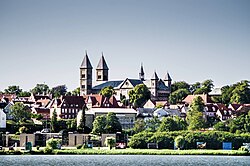
Viborg, located in central Jutland, is one of Denmark’s oldest cities with roots dating back over a thousand years. Once the political and religious heart of the country, it was where Danish kings were elected and crowned during the Middle Ages. Today, Viborg blends its historic charm with modern living. The city is best known for Viborg Cathedral, a Romanesque structure rebuilt in the 19th century but preserving medieval murals. Beyond its religious significance, Viborg offers a thriving cultural life with museums, theaters, and music venues. It is also an important regional administrative and educational center. Surrounded by lakes and green hills, Viborg offers abundant recreational opportunities, making it a city where history and natural beauty go hand in hand.
Interesting Fact:
Viborg Cathedral is home to one of Europe’s largest collections of church murals, covering over 1,500 square meters.
17. Fredericia – 41,543
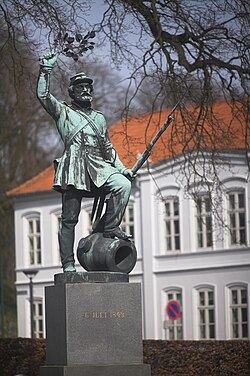
Fredericia, located on the eastern side of Jutland, is a city with a unique military history. Founded in the 17th century by King Frederick III, it was built as a fortified town to strengthen Denmark’s defenses. Its star-shaped ramparts and moats are still preserved today and serve as popular parks and walking trails. Fredericia is also a modern industrial hub, especially for transportation and logistics, due to its central location and major port facilities. The city plays an important role in Denmark’s energy sector, housing parts of the country’s gas and oil infrastructure. Despite its industrial importance, Fredericia retains a strong sense of community and cultural life, hosting music festivals, sports events, and theatrical performances throughout the year.
Interesting Fact:
Fredericia’s well-preserved fortifications remain some of the best examples of 17th-century military architecture in Europe.
18. Koge – 38,506
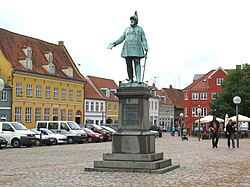
Køge, situated south of Copenhagen, is a historic town with a vibrant modern identity. Its medieval old town, filled with half-timbered houses, is among the best-preserved in Denmark and offers visitors a glimpse into centuries past. Køge has also developed into a growing commuter city, with strong transport connections to Copenhagen. The harbor has long been central to Køge’s development, and today it remains an active port and industrial hub. At the same time, the town has expanded with new residential and commercial areas, balancing old and new. Køge’s proximity to the sea provides recreational opportunities, while its cultural life includes theaters, museums, and art galleries. It is a city that combines rich history, natural beauty, and modern growth.
Interesting Fact:
Køge Town Square is the largest medieval square in Denmark and has been in continuous use since the 13th century.
19. Taastrup – 38,178
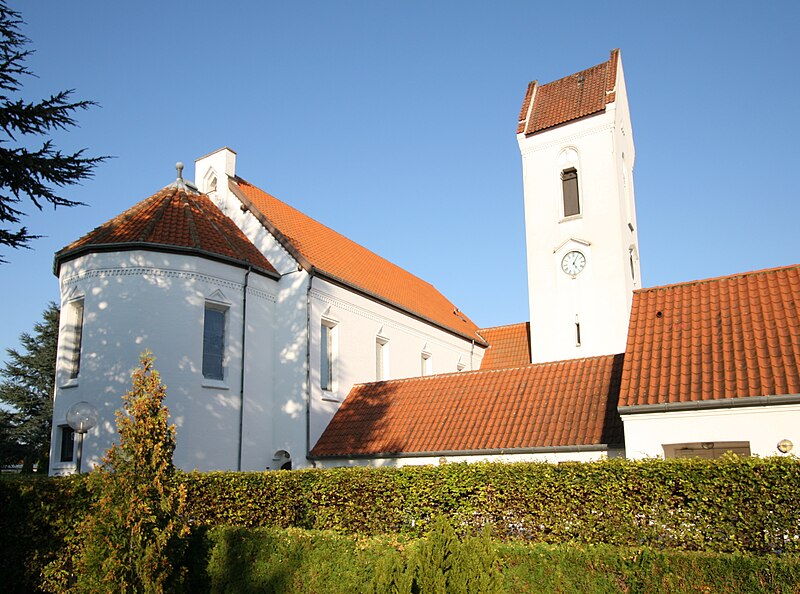
Taastrup, located just west of Copenhagen, is part of the greater capital region and has grown significantly as a residential and commercial hub. Known for its excellent transport links, including S-train connections, Taastrup provides a balance between suburban living and easy access to the capital. The city is home to Denmark’s largest shopping center, City2, which attracts visitors from across the region. It also has a strong business presence, particularly in logistics and retail. Taastrup is recognized for its family-friendly neighborhoods, green spaces, and community facilities, making it a popular place for families and commuters alike. The blend of urban amenities with a suburban feel makes it an appealing choice for many residents of Greater Copenhagen.
Interesting Fact:
Taastrup’s City2 shopping center has more than 90 shops, making it one of Denmark’s retail landmarks.
20. Holstebro – 37,487

Holstebro, in western Jutland, is widely known as a city of culture and art. It has invested heavily in public art installations, with more than 50 sculptures spread throughout the city. One of its most famous pieces is “Woman on Cart,” a bronze statue that has become the city’s emblem. Holstebro is also home to the Odin Teatret, an internationally acclaimed experimental theater group that attracts artists from around the world. The city has a lively pedestrian shopping district, one of the first established in Denmark, making it a popular regional shopping destination. Its mix of cultural vibrancy, commerce, and natural surroundings creates a unique atmosphere that distinguishes Holstebro from other towns of its size.
Interesting Fact:
Holstebro was the first Danish city to create a dedicated pedestrian shopping street in 1963.
21. Hillerod – 36,604
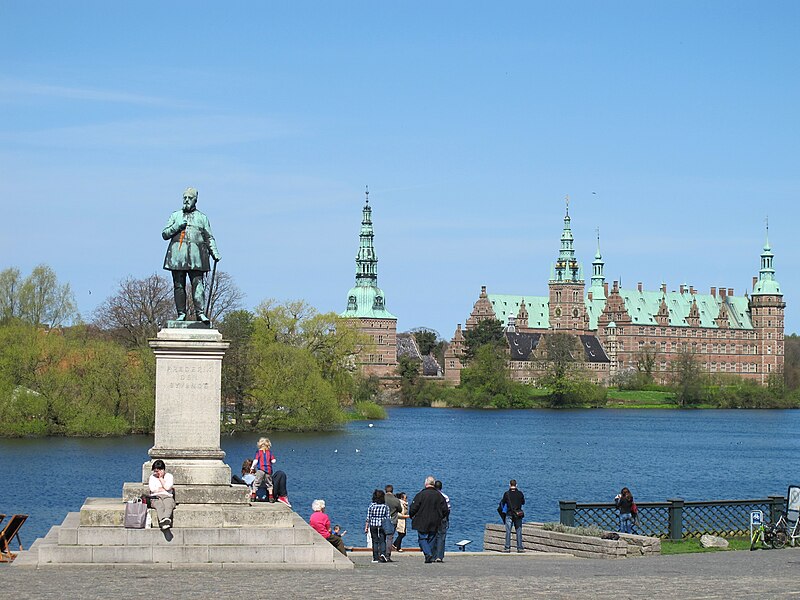
Hillerød, located in North Zealand, is a city that combines royal heritage with modern life. It is best known for Frederiksborg Castle, a magnificent Renaissance palace surrounded by lakes and gardens. The castle now houses the Museum of National History, making it a major tourist attraction. Hillerød is also an administrative and commercial center for the region, with a growing population due to its proximity to Copenhagen. The city offers a mix of shopping, education, and healthcare facilities, serving as a hub for surrounding towns. Its parks, forests, and lakes provide outdoor recreation, while its cultural life includes music events and community festivals. Hillerød’s balance of history, modern amenities, and natural beauty makes it an attractive place to live and visit.
Interesting Fact:
Frederiksborg Castle in Hillerød is the largest Renaissance castle in Scandinavia.
22. Slagelse – 35,817
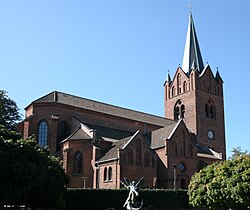
Slagelse, located on the island of Zealand, is one of Denmark’s oldest towns, with history stretching back to Viking times. Today it serves as a regional commercial and educational center, with strong ties to agriculture and trade. The town is known for its historic churches and connections to Danish military history, as it hosts one of the country’s oldest military barracks. Slagelse also has a lively city center with shops, cafes, and cultural venues. Its location along major transport routes makes it a convenient place for both residents and businesses. The city embraces both its ancient heritage and modern development, creating a dynamic community within Zealand.
Interesting Fact:
Slagelse is famously linked to Hans Christian Andersen, who attended school in the town as a young boy.
23. Holbaek – 30,903
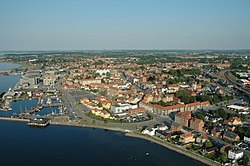
Holbæk, located on the northwest coast of Zealand, is a picturesque port city along Holbæk Fjord. Historically, it was a market town and important maritime hub. Today, it combines its harbor and waterfront with modern residential and commercial development. Holbæk is known for its sailing culture and offers abundant opportunities for water sports and outdoor recreation. The city has invested in education, healthcare, and cultural facilities, making it an attractive place to live for families and commuters working in Copenhagen. Holbæk also has a lively cultural calendar, with music festivals, art exhibitions, and local traditions celebrated year-round. Its seaside location and dynamic growth make it a unique part of Denmark’s coastal towns.
Interesting Fact:
Holbæk is known for its sailing, hosting regattas and maritime events along its scenic fjord.
24. Sonderborg – 28,333
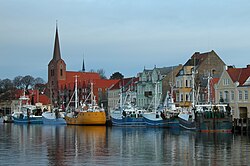
Sønderborg, located in southern Jutland near the German border, is a city rich in history and culture. Its most prominent landmark is Sønderborg Castle, which dates back to the Middle Ages and now houses a museum of regional history. The city has a vibrant waterfront with cafes, restaurants, and modern architecture, including designs by star architect Frank Gehry. Sønderborg is also an educational center, home to the University of Southern Denmark’s campus. The city has strong cross-border ties with Germany, fostering cultural exchange and business cooperation. Surrounded by beautiful landscapes and coastlines, Sønderborg is also a popular destination for tourism and leisure.
Interesting Fact:
Sønderborg Castle once imprisoned King Christian II of Denmark in the 16th century.
25. Svendborg – 27,616
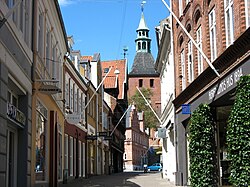
Svendborg, located on the southern coast of Funen, is one of Denmark’s oldest market towns with a strong maritime heritage. Its harbor and connection to the South Funen Archipelago make it a hub for boating, fishing, and tourism. Svendborg’s historic town center is filled with charming streets, shops, and cafes, creating a welcoming atmosphere. The city has reinvented itself as a cultural hub, hosting music festivals, art exhibitions, and maritime events. It also plays an important role in regional education and healthcare. Surrounded by scenic islands and coastlines, Svendborg is both a lively community and a gateway to some of Denmark’s most beautiful landscapes.
Interesting Fact:
Svendborg is often called the “capital of the South Funen Archipelago” because of its central role in island tourism.




